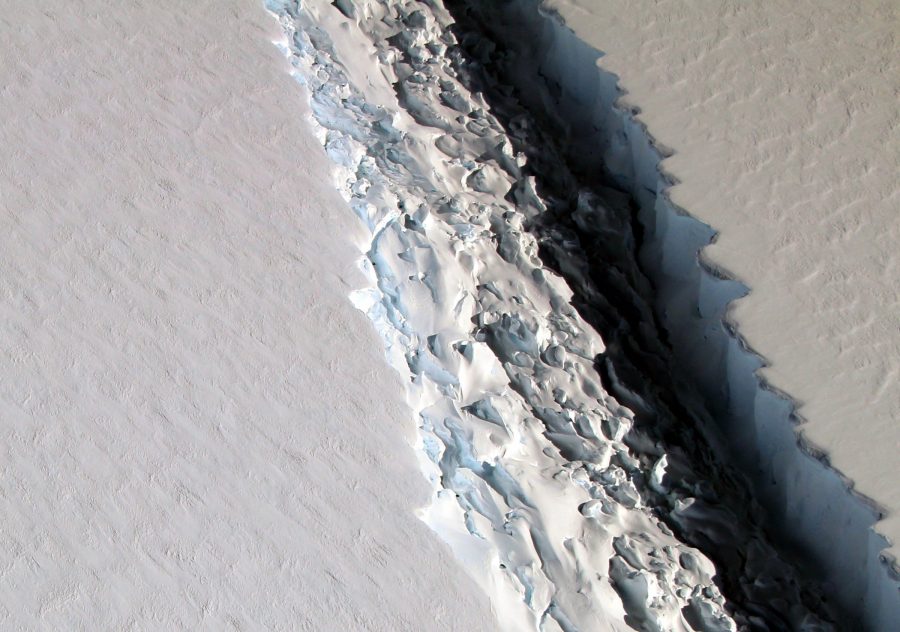Antarctica’s Larsen C Ice Shelf has cracked into a rift that could release an iceberg the size of Delaware.
Scientists are worried because it could destabilize the entire region. Furthermore, there is no solution to avoid it from happening The iceberg is consistently turning to the ocean side of the ice shelf.

A piece of the Antarctica is tearing apart
The Larsen C Ice Shelf is the fourth largest in the continent. The crack getting wider and deeper was first reported in 2014, and scientists predicted that it would create an iceberg of 1,900 square miles in a few years, equivalent to 300,000 times the size of the iceberg that sunk the Titanic.
Apparently, the crack is widening at a staggering rate of 1 meter per day. Researchers in charge of monitoring the crack announced the separation of the iceberg as imminent, expected to occur in summer 2017.

The crack was measured by using satellite images, although months can pass without researchers being able to see it optically. To circumvent the issue, they use Synthetic Aperture Radar (SAR) from the European Space Agency’s Sentinel-1 satellite. The process employs microwaves to see through clouds and storms.
In 2015, scientists announced that if the iceberg broke apart from the shelf, the shelf itself may lose balance and break up into smaller parts, although this is only a theory. Currently, only 20 kilometers of ice are keeping the whole berg from floating away.
“When it calves, the Larsen C Ice Shelf will lose more than 10% of its area to leave the ice front at its most retreated position ever recorded; this event will fundamentally change the landscape of the Antarctic Peninsula,” stated Adrian Luckman of Swansea University College of Science, who participated in Project Midas, in charge of surveying the Larsen C ice shelf.
What will happen when the iceberg splits
Currently, a glaciology research team is surveying Larsen C using seismic techniques to understand how the seafloor beneath the ice shelf is dealing the breakup. Ice shelves produce icebergs naturally, although the process is known to take a couple of decades between each breakup.
Despite the claims that global warming may be behind the phenomenon, the Project Midas crew argues that there is not enough data to confirm whether the expected calving event on Larsen C is due to climate change or not. After the iceberg has calved, researchers will have to study if it’s able to retreat into the ocean or not.
Concerning whether the detachment will affect sea level, Project Midas researchers say that it won’t, mainly because the ice shelf is already floating, so no water will be displaced in the process. Despite the ongoing debate, Larsen C is expected to behave just like Larsen B. Others are waiting for the ice shelf to regrow after a couple of years, although the possibility remains for the whole ice shelf to collapse in the future. At the point of collapse is when the sea level rise would occur.
“Even then the extra rates of sea level rise would be small – measured in mm per year at most,” Project Midas researchers assure.
Source: Phys.org
